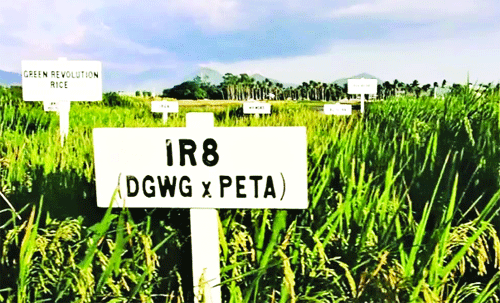It saved many nations like India from famine
The introduction of ‘IR8’ — a new variety of rice in November 1967, by the International Rice Research Institute (IRRI) in Manila, pioneered the green revolution in rice. This November, the world celebrated the 50th anniversary of IR8’s arrival. Indeed, it was a milestone in the field of rice research, and for the rice-growing nations of Asia too. According to reports, the arrival of IR8 saved millions from starvation in countries like India, where very few varieties of rice were available at that time. Besides jump-starting agricultural production across Asia, IR8 has had a remarkable advantage over other rice types that were grown in Asia. This variety requires nearly about 130 days to get mature, whereas the traditional ones take around 160 to 170 days.
Many rice-growing farmers and seasonal cultivators took to IR8 for this reason. Eventually, it did bring miraculous results as it helped various nations address acute problems of food shortage. The story of IR8 and the emergence of subsequent varieties during what came to be known as Green Revolution, established the fact that concerted efforts in scientific innovation can change life. India being a traditional rice- growing nation, gained immensely from the success of IR8. Indian farmers and scientists were widely consulted, while developing the world’s first high-yielding variety of rice at the IRRI. India's top-notch agricultural scientists such as MS Swaminathan, then Director General of the IRRI, literally brought the Green Revolution home. The IRRI and the Indian Council of Agricultural Research (ICAR) had developed a long collaboration in the period before and after the coming of IR8; this continues till date.
Celebrating the success of half a century of the miracle rice IR8, Director General of the ICAR, Trilochan Mohapatra, remarked: “IR8 has been used extensively in the development of subsequent rice varieties. We should take what we have learned from our partnership with the IRRI, and use it for our country to build the rice sector strategy so we can achieve more than what we had previously.” Also, the ICAR has provided institutional support to sustain the Green Revolution and subsequent developments in Indian agriculture. With massive application of science and technology, the ICAR has enabled the country to increase the production of food grains by five times since 1951 to 2014. Apart from promoting higher education in agriculture, the ICAR has heralded a visible impact on national food and nutritional security.
IR8 was first grown in India by a farmer named Nekkanti Subba Rao, in Andhra Pradesh. He even made serious efforts to promote the rice variety, which earned him the nickname, ‘Mr IR8'. Then gradually, IR8 moved towards other southern States like Tamil Nadu and also to the rest of the country. Today, to make rice-growing farmers more secure and productive, India needs a full-fledged application of advanced scientific methods to be adopted in agriculture — something Prime Minister Modi has been advocating. Time has come to turn the Indian rice research community more participatory, involving more farmers — and especially women — in the process. Meanwhile, the agricultural sector itself needs a fresh dose of holistic reforms.


























